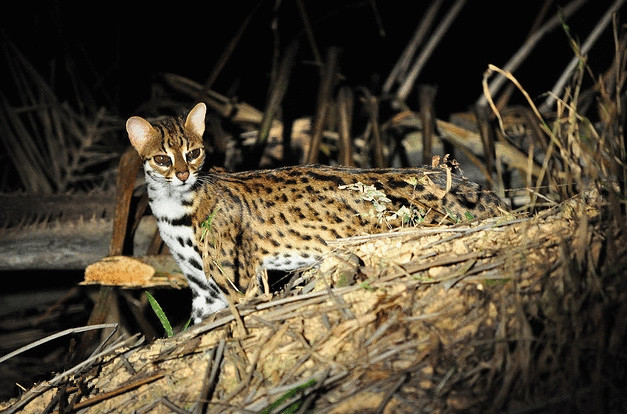The business world is sometimes described figuratively as dog eat dog. In the state of Maharashtra in western India the situation is literally cat eat dog. Where the cats are leopards and the dogs are, well, dogs. That's the finding of a Wildlife Conservation Society study published in the journal Oryx.
有时,人们会形象地把商业界比喻成狗咬狗的世界。然而,该情况在印度西部的马哈拉施特拉邦城却不同,这里被比喻为猫吃狗的世界。马哈拉施特拉邦城中的猫都是狸猫,狗呢?当然还是狗。上述研究由野生动物保护协会发表在Oryx杂志上。
The paper points out that big cat ecology and predator prey interactions in tropical regions are typically studied in natural systems. The majority of the prey in those cases are ungulates: think zebras or deer. But in human-dominated areas, especially agricultural ones, you can have large populations of domesticated animals—a big attraction for any hungry wildlife.
文中指出:在自然体系中,科学家热衷于研究热带地区的大型猫科动物学和捕食者与被捕食者之间的相互作用。热带地区的被捕食者大多都是有蹄动物,比如:斑马和鹿。而在人类居住的地方,尤其是在以农业为主的地方,人类可以大量驯养家畜——这对那些饥肠辘辘的野生动物来说无疑是个巨大的诱惑。

Researchers examined 85 leopard scats, because that's how you do this kind of research. And 87 percent of the prey biomass they recovered was from domestic animals, with nearly half of that coming from dogs, many of them presumably feral.
根据常理,科学家们对85只狸猫展开了调查。他们发现:家畜占了被捕食者生物量的87%,其中狗的数量接近一半,这些狗可能大部分是野生的。
Livestock make up only a small part of the leopard diet. For example, goats outnumber dogs seven to one, but are just 11 percent of meals for the cats, probably because they're penned in at night. Those numbers are good news because they may calm farmers' fears about losses of agriculturally valuable species. Of course, it's not good news for the dogs.
而在狸猫的饮食中,家畜只占了一小部分。例如山羊,它在狸猫的饮食中仅占11%,尽管数量远超过狗(两者的比例为7:1)。这大概是因为家畜夜间被关入笼中的缘故吧。这些数据对农户来说无疑是好消息,因为农户可以不用过分担心那些具有农业价值的物种会遭受损失。当然,这对狗来说却不是什么好消息了。












